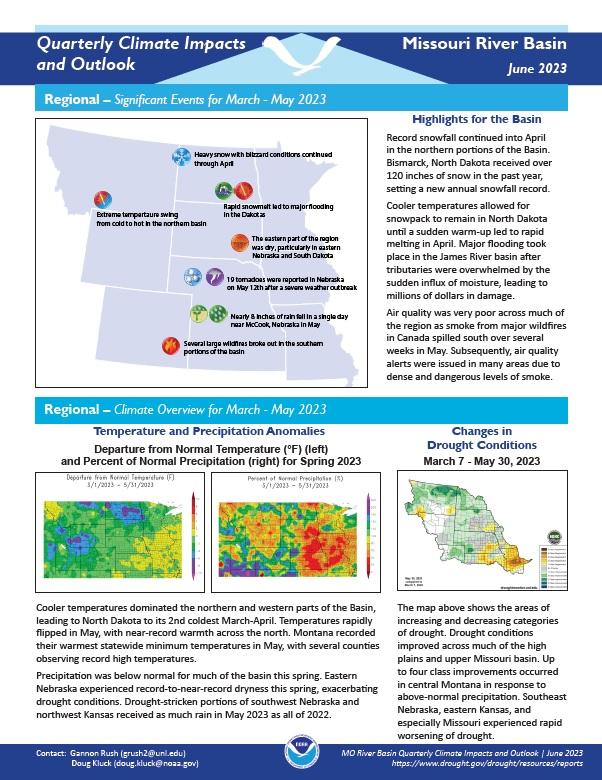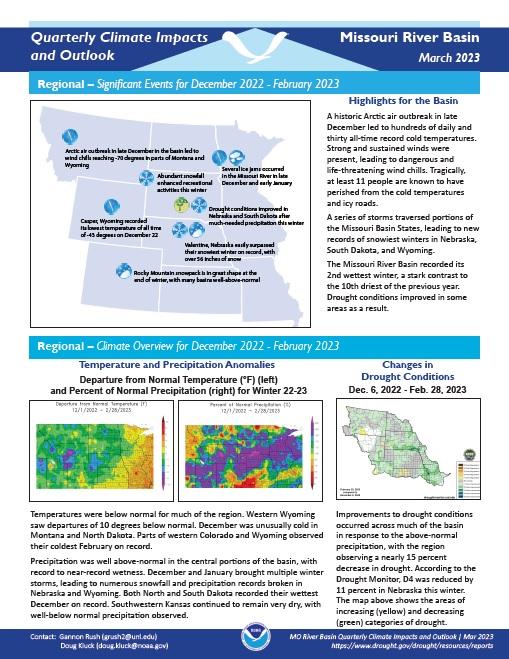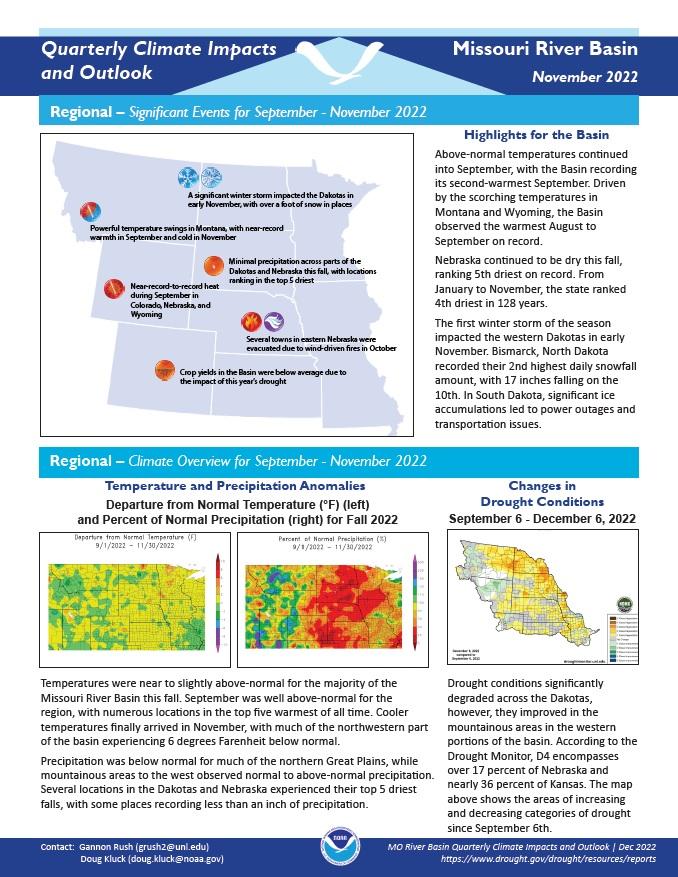For the latest forecasts and critical weather information, visit weather.gov.
Quarterly Climate Impacts and Outlook for the Missouri River Basin for March–May 2023. Dated June 2023.
Cooler temperatures dominated the northern and western parts of the Basin, leading North Dakota to its 2nd coldest March–April. Temperatures rapidly flipped in May, with near-record warmth across the north. Precipitation was below normal for much of the basin this spring. Eastern Nebraska experienced record to near-record dryness this spring, exacerbating drought conditions.
Under Congressional direction, NOAA’s National Integrated Drought Information System (NIDIS) is leading an interagency team on the Upper Missouri River Basin (UMRB) Soil Moisture and Snowpack Data Value Study.
Quarterly Climate Impacts and Outlook for the Missouri River Basin for December 2022–February 2023. Dated March 2023.
Temperatures were below normal for much of the region. Precipitation was well above normal in the central portions of the basin, with record to near-record wetness. Improvements to drought conditions occurred across much of the basin in response to the above-normal precipitation, with the region observing a nearly 15% decrease in drought.
The 2020–2021 drought of the greater U.S. Northern Plains and Canadian Prairies was a multi-billion-dollar event that had wide-reaching impacts on the region’s communities, ecosystems, water resources, and agricultural systems. Building off of the lessons learned from the flash drought of 2017—the last drought to affect the region—the 2020–2021 Drought in the U.S. Northern Plains and Canadian Prairies report advances understanding of drought response and preparedness actions by highlighting new efforts, along with outstanding gaps and needs.
Quarterly Climate Impacts and Outlook for the Missouri River Basin for September–November 2022. Dated December 2022.
Temperatures were near to slightly above-normal for the majority of the Missouri River Basin this fall. Precipitation was below normal for much of the northern Great Plains, while mountainous areas to the west observed normal to above-normal precipitation.








